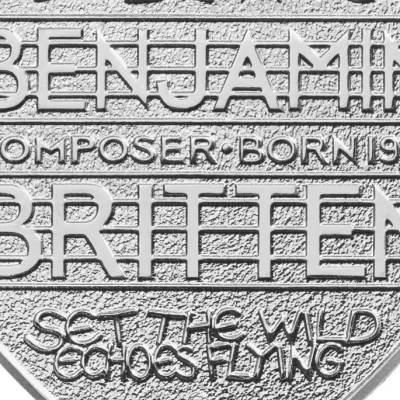A new exhibition in New York surveys the experimental mid-century group of German artists, ZERO, and the international network of more than 40 artists they inspired. We asked the curator Valerie Hillings about the show.
Click here for a gallery of highlights from the exhibition
Can you tell us a bit about the exhibition?
The exhibition charts an important chapter in art history that begins in Düsseldorf, then West Germany, in 1957. It spans the 1960s and multiple cities, mostly in Europe but also New York and Philadelphia in the United States. Its dual focus is the German artists’ group Zero – comprised of Heinz Mack, Otto Piene, and Günther Uecker – and a larger network of artists with whom they forged connections and working relationships.
They found common cause in their reaction against Art Informel and Tachisme, and in their embrace of a series of common artistic strategies and interests, chief among them monochrome painting, the immaterial, light, movement, and space. This ZERO network of artists had various other affiliations and individual careers, yet they came together in exhibitions and publications and jointly realised certain projects. It is this shared history that is the focus of ‘ZERO: Countdown to Tomorrow, 1950s–60s’, the first large-scale exhibition of ZERO in a US museum.
What makes this a distinctive show?
I have seen many ZERO exhibitions over the last 15 years, and have always longed to see more instances of work by artists comprising the network being installed together. So many previous shows have used geography, individual artists, and specific contexts to frame their presentations, but here we are aiming to think first and foremost about connections.
I am also focused on key exhibitions, since that was really a major mechanism for the network coming together. Several are being evoked as dedicated chapters in the show. In many cases, works have been selected because they were actually in the key exhibitions or reproduced in the artist-created magazines, among them ZERO and Azimuth. Giving prominence to the type of work that was seen to be ZERO in the period was critical for me, although of course some choices were made based on the strength of the specific work rather than its exhibition history. Lastly, it’s important to note that the checklist was developed in consultation with all of the living artists, and the foundations of many who are no longer with us.
How did you come to curate this exhibition?
One of the chapters in my doctoral thesis was on ZERO. Our director Richard Armstrong became interested in this history a few years back and thought it would make a very strong and long overdue exhibition, and so I was asked to develop the show for the Guggenheim.
What is likely to be the highlight of the exhibition?
On a conceptual level, a highlight will certainly be the chance to encounter the work of so many unfamiliar yet truly remarkable artists. But specifically, I think it will be the Lichtraum (Hommage à Fontana) installation that ends the show and was presented by Group Zero (Mack, Piene, Uecker) in 1964 at ‘Documenta III’. It has never been shown in the United States, and it really summarises many aspects of this history as well as ZERO’s legacy.
Concetto Spaziale, Attese (1959), Lucio Fontana © 2014 Artists Rights Society (ARS)/SIAE Rome. Photo: David Heald © The Solomon R. Guggenheim Foundation, New York

And what’s been the most exciting personal discovery for you?
I have been thrilled to learn through my participation on the ZERO foundation’s Scientific Board that there are many others in my generation researching ZERO’s history. I discovered that I was not alone but rather part of a dynamic new network of scholars and curators working in different countries.
What’s the greatest challenge you’ve faced in preparing this exhibition?
The greatest challenge, both personally and professionally, was losing Otto Piene so soon before the show is being realised. He was a mentor and friend to me for 15 years, and I was so looking forward to seeing the exhibition come to fruition together.
How are you using the gallery space? What challenges will the hang/installation pose?
We decided to create a visual evocation of the landmark 1959 exhibition ‘Vision in Motion—Motion in Vision’ held at the Hessenhuis in Antwerp, Belgium at the start of the exhibition. There the paintings were hung in free space, making them seem almost to be floating. We have worked closely with our expert installation team and in consultation with our lenders to replicate this approach. I have to say I think it’s going to be truly breathtaking and as much of an ‘ah ha’ moment for our audience as it was for the artists themselves at the time.
One of the biggest spatial challenges we had was the fact that many of the ZERO works were installations and most of our museum is not enclosed. So we had to rely on our brilliant exhibition designer Melanie Taylor to devise how to realise select enclosed spaces on our ramps.
Which other works would you have liked to have included?
I was just saying the other day that I would really have liked to show the Dutch artist Armando’s 1962 installation comprised of Goodyear tires mounted to a black wall. It was in the landmark ‘tentoonstellung nul’ show in the Stedelijk Museum and was very much ahead of its time. But our ceiling height was simply too low to accommodate the work!
‘ZERO: Countdown to Tomorrow, 1950s–60s’ is at the Guggenheim, New York, from 10 October–7 January 2015.
Related Articles
Otto Piene: 1928–2014 (Maggie Gray)




